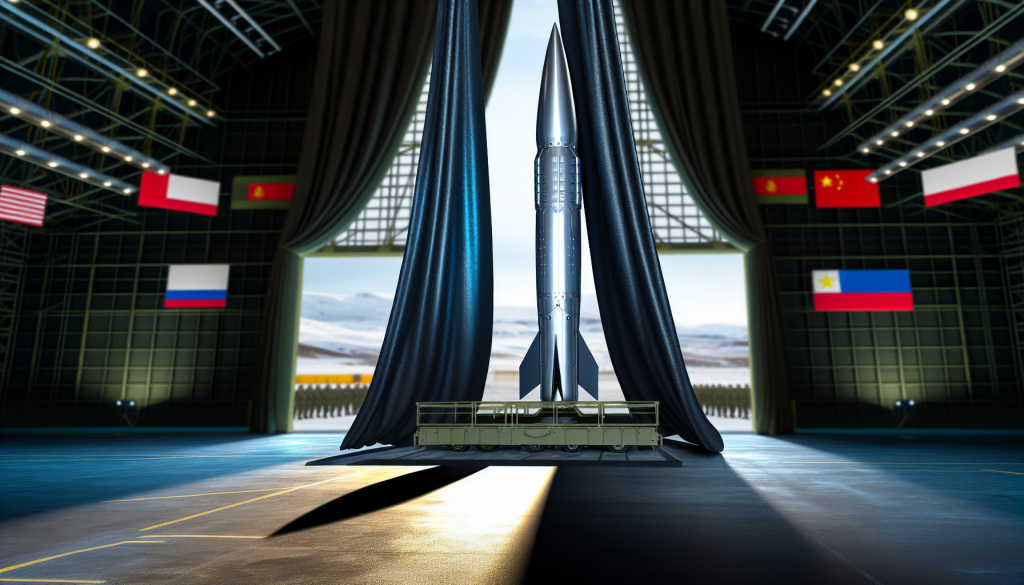North Korea’s Hypersonic Leap: The Hwasong-11Ma Missile
North Korea recently took the spotlight in military innovation by unveiling the Hwasong-11Ma at its Defense Development 2025 military exhibition. This event marks an important moment not just for North Korean military capabilities but also for global security dynamics.
What Is the Hwasong-11Ma?
The Hwasong-11Ma is North Korea’s latest addition to its arsenal of hypersonic missiles. It is distinguished by its hypersonic glide vehicle located within the missile’s main section. This advanced technology allows the missile to separate mid-flight, enabling it to approach targets at speeds exceeding Mach 5—roughly 6,000 km/h. Such velocities create challenges for traditional missile defense systems, making the Hwasong-11Ma a significant upgrade over its predecessors.
Family Ties: The Hwasong-11 Series
The name “Hwasong-11Ma” indicates its lineage within the Hwasong-11 missile family. However, this family includes various missiles that may not share many technological intricacies. A closer examination reveals that the Hwasong-11Ma is particularly based on the Hwasong-11Da, where it replaces the original warhead with a glide vehicle and a separation mechanism, signifying a shift towards hypersonic capabilities.
Launcher and Booster Developments
Diving deeper into its functionality, the Hwasong-11Ma utilizes a launcher design inspired by the Hwasong-11Da. This design incorporates a separation mechanism and a hypersonic glide vehicle, enhancing its operational efficiency. The missile’s booster has been derived from another earlier version known as the Hwasong-11Ga or KN-23, which maintains ties to the Russian 9M723 from the Iskander-M missile system.
Interestingly, the KN-23 is capable of being launched from the Iskander-M launcher. However, due to the Hwasong-11Ma’s increased size—about 1.5 meters longer than its precursor—this new missile cannot use the same launch system, presenting logistical and strategic considerations.
Similarities to the Iskander-M
A striking aspect of the Hwasong-11Ma is its resemblance to Russia’s Iskander-M missile. Both missiles share nearly identical tail sections and a similar launcher architecture, characterized by two missile configurations and an opening roof mechanism. This suggests that North Korea may be taking cues from Russian military technology, underscoring a trend of cooperation or imitation in missile development.
Characteristics and Capabilities
While specific characteristics of the Hwasong-11Ma are still under wraps, it provides a strategic insight into North Korea’s ambitions. For comparison, the Hwasong-11Da has a warhead that weighs approximately 2.5 tons and boasts a range of 600 km. It is anticipated that the Hwasong-11Ma will extend this range, although it’s likely that the warhead will be smaller to accommodate the new design features.
Recent developments underscore North Korea’s evolving capabilities; in 2024, the nation nearly doubled the warhead capacity of some existing variants to 4.5 tons, which led to a compromise in range. Such developments indicate ongoing advancements and experimentation within North Korean military technology.
The Broader Implications
The unveiling of the Hwasong-11Ma serves as a telling reminder of the evolving nature of modern warfare, where hypersonic technology is becoming a grounded factor in military strategy. The implications reach beyond the Korean Peninsula, affecting military postures and defense mechanisms around the globe. Nations are urged to reconsider their defense strategies in light of these rapid advancements, as the landscape of global military power continues to shift.
Visual Insights
To gain a better understanding of the Hwasong-11Ma and its launch systems, the images from the exhibition highlight North Korea’s growing prowess. As nations observe these developments, the potential for a significant shift in regional security dynamics becomes increasingly pronounced.
The emergence of missiles like the Hwasong-11Ma not only underscores North Korea’s commitment to military advancement but raises critical questions about security and stability in global geopolitics.

